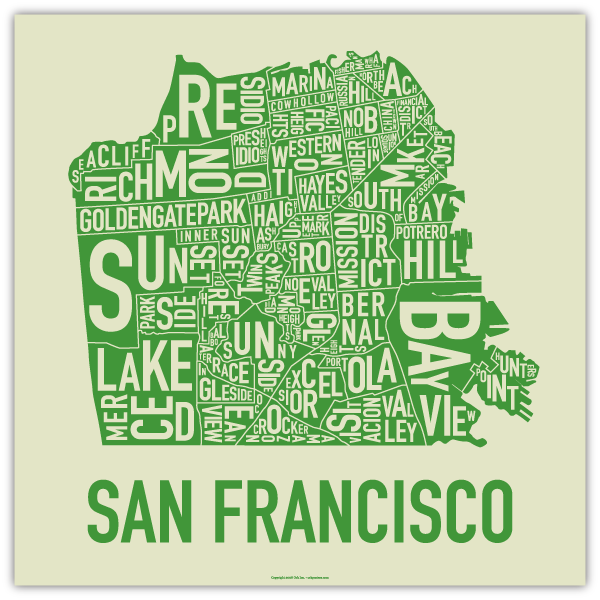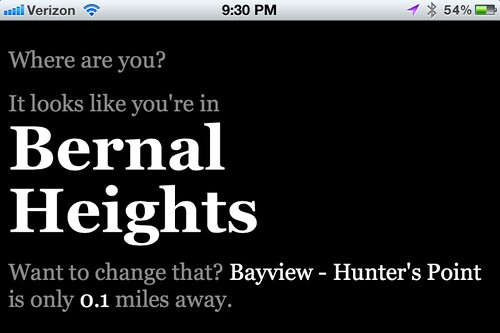You guys, I can't tell you how exhausting San Francisco is. The weather is fantastic, the people are interesting, it's just so *tiring*.
— Dana Contreras (@DanaDanger) April 29, 2012
I've lived in this city for nine seven years now. It's the best place I've ever lived. About the same population as Frankfurt, same land area as Cambridge, pretty much as sunny as Denver, similar cultural diversity to that of London, and by now it feels more like home than my original hometown Sheffield.
I find the neighborhoods endlessly fascinating, too. The neat-o posters:
the microclimates and sub-microclimates, now with an associated iPhone app:
The app provides a detailed listing of the temperature, cloud cover, wind speed and chance of precipitation for 17 different San Francisco microclimates. Developer Michelle Sintov came up with the idea during her daily bike commute from the Richmond to SoMa. "I'd hit Divisadero Street and suddenly see the sun," she told [us] with a laugh.the passionate upstart neighborhood-wannabes and the enormous diversity of opinions on what the neighborhoods are, from the sublime to the unreadable.
- New iPhone App Shows Weather Forecasts For Every Neighborhood In San Francisco, Huffington Post
The boundaries between neighborhoods are interesting in particular. Where exactly does 18th Street, going East to West, transition from Dogpatch to Potrero to Mission to Mission Dolores to Castro to Upper Market? What precise shapes to these perfectly tessellating areas take?
Obviously the notion of neighborhood borders as zero-width lines is a fiction. Nonetheless it's a fiction with significant appeal to someone with a mathematical background and an Aspergic heritage. I've often found myself somewhere familiar in San Francisco, thinking "is this technically Mission or Noe or Castro?" — or somewhere completely unfamiliar, thinking "I wonder what neighborhood this is".
So I made this thing. It's an iPhone app which tells you where in San Francisco you are. This is me, at home:
It doesn't show you a map, or tell you the history of the neighborhood, or link to Wikipedia, or give you vital stats like population or elevation or weather. It just tells you what neighborhood you're currently in—and how far you are from the closest adjacent neighborhood. That's it. †
Next time: how it works and how I made it. And if, in the meantime, you live in San Francisco and you're interested in trying it out for me, let me know.
† the best idea I had to reject from an early tester was listing imports and exports of the neighborhood, eg. "Mission District. Imports: cheap beer; Exports: hipsters"

